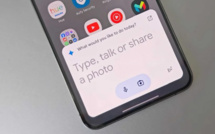Once a week, pencil in two hours of free time and equip yourself with a planning tool. This may be Outlook, Google Calendar, iCal, or any digital tool of your choice. You can use ordinary paper, if you prefer.
Step 1. Refresh the target. The problem with many people is that they rarely remember their key goal, and therefore constantly deviate from their route. Spend the first 10 minutes to repeat your main goal. Imagine how you will achieve it. Look forward to seeing how your goals come true.
Step 2. Plan meetings. In the second step, search your memory for everything you have planned. Now ask yourself a few questions about the upcoming work: What results are desired? Do we need this meeting at all? Did we invite the right people? How to get the most out of this time? Do I need to shorten this period? Or maybe extend? What preparations are needed? Write down missing points, and pay close attention to this step. Good preparation for a meeting means half the battle won.
Step 3. Time for me. One of the most important steps is to plan time for self-improvement. It can be sports, reading, meditation, or setting goals. You can also add family or friends, social activities. All of these actions have to be planned, otherwise they will disappear from your life being replaced by "very unimportant but urgent business."
Step 4. "Green time". "Green time" is time for money, that is, the work that brings you the basic income. If you think of it, there is little action that profits you directly. If you are a manager, it is management of a company or a department, nothing more. If you are a salesperson, this is sales. If you are an athlete, it's training and performance. Even in large companies, there is one purpose for which you are paid, and nothing more. Plan your "green time" to have direct responsibilities, and stick to it!
Step 5. "Red time". "Red time" is also part of the professional activity. This is the time for which you are not paid directly, but helps to qualitatively perform your "green time" duties. For example, the "red time" may include studying, preparing for a presentation, classification of potential clients, documentation, performance evaluation and other supporting activities. "Red time" also has to be scheduled, otherwise this "stop" signal won’t let you shift to "green time".
Step 6: Plan some rest. It is best to spend this time alone, think of something to dream, or just get some fresh air. Take care of yourself, your mind, body and spirit. And yes – this should be pre-arranged as well. Otherwise, in the pursuit of the goal you may overextend yourself and eventually get nothing but fatigue.
Indeed, if you devote two hours a week of good planning, life becomes easier and more fun! Do this on a weekly basis, and you won’t see yourself saying "I have no time!" anymore.
Based on 'Train Your Brain for Success. Read Smarter, Remember More and Break Your Own Records' by Roger Seip
Step 1. Refresh the target. The problem with many people is that they rarely remember their key goal, and therefore constantly deviate from their route. Spend the first 10 minutes to repeat your main goal. Imagine how you will achieve it. Look forward to seeing how your goals come true.
Step 2. Plan meetings. In the second step, search your memory for everything you have planned. Now ask yourself a few questions about the upcoming work: What results are desired? Do we need this meeting at all? Did we invite the right people? How to get the most out of this time? Do I need to shorten this period? Or maybe extend? What preparations are needed? Write down missing points, and pay close attention to this step. Good preparation for a meeting means half the battle won.
Step 3. Time for me. One of the most important steps is to plan time for self-improvement. It can be sports, reading, meditation, or setting goals. You can also add family or friends, social activities. All of these actions have to be planned, otherwise they will disappear from your life being replaced by "very unimportant but urgent business."
Step 4. "Green time". "Green time" is time for money, that is, the work that brings you the basic income. If you think of it, there is little action that profits you directly. If you are a manager, it is management of a company or a department, nothing more. If you are a salesperson, this is sales. If you are an athlete, it's training and performance. Even in large companies, there is one purpose for which you are paid, and nothing more. Plan your "green time" to have direct responsibilities, and stick to it!
Step 5. "Red time". "Red time" is also part of the professional activity. This is the time for which you are not paid directly, but helps to qualitatively perform your "green time" duties. For example, the "red time" may include studying, preparing for a presentation, classification of potential clients, documentation, performance evaluation and other supporting activities. "Red time" also has to be scheduled, otherwise this "stop" signal won’t let you shift to "green time".
Step 6: Plan some rest. It is best to spend this time alone, think of something to dream, or just get some fresh air. Take care of yourself, your mind, body and spirit. And yes – this should be pre-arranged as well. Otherwise, in the pursuit of the goal you may overextend yourself and eventually get nothing but fatigue.
Indeed, if you devote two hours a week of good planning, life becomes easier and more fun! Do this on a weekly basis, and you won’t see yourself saying "I have no time!" anymore.
Based on 'Train Your Brain for Success. Read Smarter, Remember More and Break Your Own Records' by Roger Seip



















